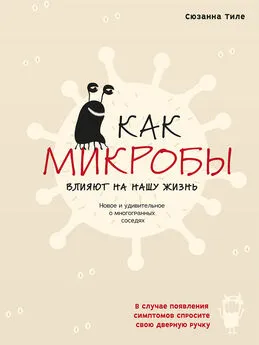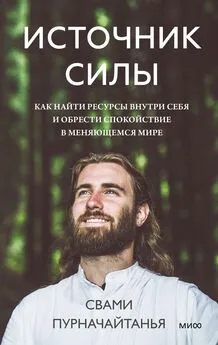Роб Найт - Смотри, что у тебя внутри. Как микробы, живущие в нашем теле, определяют наше здоровье и нашу личность
- Название:Смотри, что у тебя внутри. Как микробы, живущие в нашем теле, определяют наше здоровье и нашу личность
- Автор:
- Жанр:
- Издательство:АСТ: CORPUS
- Год:2015
- Город:Москва
- ISBN:978-5-17-091312-1
- Рейтинг:
- Избранное:Добавить в избранное
-
Отзывы:
-
Ваша оценка:
Роб Найт - Смотри, что у тебя внутри. Как микробы, живущие в нашем теле, определяют наше здоровье и нашу личность краткое содержание
Смотри, что у тебя внутри. Как микробы, живущие в нашем теле, определяют наше здоровье и нашу личность - читать онлайн бесплатно полную версию (весь текст целиком)
Интервал:
Закладка:
112
H. J. Kim et al., “A Randomized Controlled Trial of a Probiotic Combination VSL# 3 and Placebo in Irritable Bowel Syndrome with Bloating,” Neurogastroenterology and Motility: The Official Journal of the European Gastrointestinal Motility Society 17, no. 5 (October 2005): 687–96.
113
D. J. Merenstein, J. Foster, and F. D’Amico, “A Randomized Clinical Trial Measuring the Influence of Kefir on Antibiotic-Associated Diarrhea: The Measuring the Influence of Kefir (MILK) Study,” Archives of Pediatrics & Adolescent Medicine 163, no. 8 (August 2009): 750–54; R. S. Beniwal, “A Randomized Trial of Yogurt for Prevention of Antibiotic-Associated Diarrhea,” Digestive Diseases and Sciences 48, no. 10 (October 2003): 2077–82.
114
“Clostridium Difficile Fact Sheet,” Centers for Disease Control and Prevention, accessed September 2014, www.cdc.gov/hai/eip/pdf/Cdiff-factsheet.pdf.
115
I. Youngster, “Fecal Microbiota Transplant for Relapsing Clostridium Difficile Infection Using a Frozen Inoculum from Unrelated Donors: A Randomized, Open-Label, Controlled Pilot Study,” Clinical Infectious Diseases: An Official Publication of the Infectious Diseases Society of America 58, no. 11 (June 1, 2014): 1515–22; Z. Kassam et al., “Fecal Microbiota Transplantation for Clostridium Difficile Infection: Systematic Review and MetaAnalysis,” American Journal of Gastroenterology 108, no. 4 (April 2013): 500–508.
116
“How Well Do Vaccines Work?”, Vaccines. gov, US Department of Health and Human Services, accessed October 11, 2014, www.vaccines.gov/basics/effectiveness.
117
“Vaccines • Disease,” Immunization Healthcare Branch, accessed October 11, 2014, www.vaccines.mil/Vaccines.
118
Y. Li et al., “On the Origin of Smallpox: Correlating Variola Phylogenics with Historical Smallpox Records,” Proceedings of the National Academy of Sciences of the United States of America 104, no. 40 (October 2, 2007): 15787–92.
119
Rob Stein, “Should Last Remaining Known Smallpox Virus Die?”, Washington Post , March 8, 2011.
120
Z. Wang et al., “Gut Flora Metabolism of Phosphatidylcholine Promotes Cardiovascular Disease,” Nature 472, no. 7341 (April 7, 2011): 57–63.
121
A. D. Kostic et al., “Genomic Analysis Identifies Association of Fusobacterium with Colorectal Carcinoma,” Genome Research 22, no. 2 (February 2012): 292–98.
122
Ley, “ Microbial Ecology .”
123
C. A. Lowry et al., “Identification of an Immune-Responsive Mesolimbocortical Serotonergic System: Potential Role in Regulation of Emotional Behavior,” Neuroscience 146, no. 2 (May 11, 2007): 756–72.
124
G. A. Rook, C. L. Raison, and C. A. Lowry, “Can We Vaccinate Against Depression?”, Drug Discovery Today 17, nos. 9–10 (May 2012): 451–58.
125
“Conjunctivitis (Pink Eye) in Newborns,” Centers for Disease Control and Prevention, accessed October 11, 2014, www.cdc.gov/conjunctivitis/newborns.html.
126
J. F. Burns, “British Medical Council Bars Doctors Who Linked Vaccine with Autism,” New York Times , May 24, 2010.
127
“Possible Side Effects from Vaccines,” Centers for Disease Control and Prevention, accessed October 11, 2014, www.cdc.gov/vaccines/vacgen/side-effects.htm.
128
New York Times editorial board, “The Rise of Antibiotic Resistance,” New York Times , May 10, 2014.
129
M. J. Blaser, Missing Microbes: How the Overuse of Antibiotics Is Fueling Our Modern Plagues . New York: Henry Holt, 2014.
130
“Battle of the Bugs: Fighting Antibiotic Resistance,” US Food and Drug Administration, last modified August 17, 2011, www.fda.gov/Drugs/ResourcesForYou/Consumers/ucm143568.htm.
131
G. D. Wright, “Mechanisms of Resistance to Antibiotics,” Current Opinion in Chemical Biology 7, no. 5 (October 2003): 563–69.
132
V. J. Paul et al., “Antibiotics in Microbial Ecology: Isolation and Structure Assignment of Several New Antibacterial Compounds from the Insect-Symbiotic Bacteria Xenorhabdus Spp,” Journal of Chemical Ecology 7, no. 3 (May 1981): 589–97.
133
“Use of Antimicrobials Outside Human Medicine and Resultant Antimicrobial Resistance in Humans,” World Health Organization, accessed October 12, 2014, http://web.archive.org/web/20040513120635/, http://www.who.int/mediacentre/factsheets/fs268/en/index.html.
134
R. M. Lowe et al., “Escherichia Coli O157: H7 Strain Origin, Lineage, and Shiga Toxin 2 Expression Affect Colonization of Cattle,” Applied Environmental Microbiology 75, no. 15 (August 2009): 5074–81.
135
I. Cho et al., “Antibiotics in Early Life Alter the Murine Colonic Microbiome and Adiposity,” Nature 488, no. 7413 (August 30, 2012): 621–26.
136
Blaser, Missing Microbes .
137
L. Trasande et al., “Infant Antibiotic Exposures and Early-Life Body Mass,” International Journal of Obesity 37, no. 1 (January 2013): 16–23.
138
S. Foliaki et al., “Antibiotic Use in Infancy and Symptoms of Asthma, Rhinoconjunctivitis, and Eczema in Children 6 and 7 Years Old: International Study of Asthma and Allergies in Childhood Phase III,” Journal of Allergy and Clinical Immunology 124, no. 5 (November 2009): 982–89.
139
A. T. Stefka et al., “Commensal Bacteria Protect Against Food Allergen Sensitization,” Proceedings of the National Academy of Sciences of the United States of America 111, no. 36 (September 9, 2014): 13145–50.
140
См. сайт American Gut, www.americangut.org.
141
E. S. Lander et al., “Initial Sequencing and Analysis of the Human Genome,” Nature 409, no. 6822 (February 15, 2001): 860–921.
142
Human Microbiome Project Consortium, “Structure, Function and Diversity.”
143
C. Lozupone and R. Knight, “UniFrac: A New Phylogenetic Method for Comparing Microbial Communities,” Applied and Environmental Microbiology 71, no. 12 (December 2005): 8228–35.
144
Turnbaugh et al., “Core Gut Microbiome in Obese and Lean Twins”; M. Hamady et al., “A Core Gut Microbiome in Obese and Lean Twins,” Nature 457, no. 7228 (January 22, 2009): 480–84.
145
Le Chatelier et al., “Richness of Human Gut Microbiome Correlates with Metabolic Markers.”
146
J. L. Dunne, “The Intestinal Microbiome in Type 1 Diabetes,” Clinical and Experimental Immunology 177, no. 1 (July 2014): 30–37.
147
E. Soyucen et al., “Differences in the Gut Microbiota of Healthy Children and Those with Type 1 Diabetes,” Pediatrics International: Official Journal of the Japan Pediatric Society 56, no. 3 (June 2014): 336–43.
148
M. E. Mejia-Leon et al., “Fecal Microbiota Imbalance in Mexican Children with Type 1 Diabetes,” Scientific Reports 4 (2014): 3814.
149
N. Larsen et al. “Gut Microbiota in Human Adults with Type 2 Diabetes Differs from Non-Diabetic Adults,” PloS One 5, no. 2 (2010): e9085.
150
F. H. Karlsson et al., “Gut Metagenome in European Women with Normal, Impaired and Diabetic Glucose Control,” Nature 498, no. 7452 (June 6, 2013): 99–103.
151
J. Sato et al., “Gut Dysbiosis and Detection of ‘Live Gut Bacteria’ in Blood of Japanese Patients with Type 2 Diabetes,” Diabetes Care 37, no. 8 (August 2014): 2343–50.
152
J. Qin et al., “A Metagenomewide Association Study of Gut Microbiota in Type 2 Diabetes,” Nature 490, no. 7418 (October 4, 2012): 55–60.
153
Frank et al., “MolecularPhylogenetic Characterization of Microbial Community Imbalances.”
154
Tong et al., “Modular Organization of Human Intestinal Mucosal Microbiota and Its Association with Inflammatory Bowel Disease.”
155
E. Li et al., “Inflammatory Bowel Diseases Phenotype, C. Difficile and NOD2 Genotype Are Associated with Shifts in Human Ileum Associated Microbial Composition,” PloS One 7, no. 6 (2012): e26284.
156
D. Gevers et al., “The TreatmentNaive Microbiome in New-Onset Crohn’s Disease,” Cell Host & Microbe 15, no. 3 (March 12, 2014): 382–92.
157
C. Manichanh et al., “Anal Gas Evacuation and Colonic Microbiota in Patients with Flatulence: Effect of Diet,” Gut 63, no. 3 (March 13, 2014): 401–8.
158
Castellarin et al., “Fusobacterium Nucleatum Infection Prevalent in Human Colorectal Carcinoma.”
159
Rubinstein et al., “Fusobacterium Nucleatum Promotes Colorectal Carcinogenesis by Modulating ECadherin/Beta-Catenin Signaling via Its FadA Adhesin.”
160
Kostic et al., “Fusobacterium Nucleatum Potentiates Intestinal Tumorigenesis and Modulates Tumor-Immune Microenvironment.”
161
Warren et al., “Co-occurrence of Anaerobic Bacteria in Colorectal Carcinomas.”
162
Flanagan et al., “Fusobacterium Nucleatum Associates with Stages of Colorectal Neoplasia Development, Colorectal Cancer and Disease Outcome,” 1381–90.
163
Koeth et al., “Intestinal Microbiota Metabolism of L–Carnitine.”
164
Tang et al., “Intestinal Microbial Metabolism of Phosphatidylcholine and Cardiovascular Risk.”
165
Scher et al., “Expansion of Intestinal Prevotella Copri Correlates with Enhanced Susceptibility to Arthritis.”
166
F. H. Karlsson et al., “Gut Metagenome in European Women With Normal, Impaired and Diabetic Glucose Control,” Nature 498, no. 7452 (June 6, 2013): 99–103.
167
J. Qin et al., “A MetagenomeWide Association Study of Gut Microbiota in Type 2 Diabetes,” Nature 490, no. 7418 (Oct. 4, 2012): 55–60.
168
D. Knights et al., “HumanAssociated Microbial Signatures: Examining Their Predictive Value,” Cell Host & Microbe 10, no. 4 (Oct. 20, 2011): 292–6.
169
D. Gevers et al., “The TreatmentNaive Microbiome in New-Onset Crohn’s Disease,” Cell Host & Microbe 15, no. 3 (March 12, 2014): 382–92.
Читать дальшеИнтервал:
Закладка:
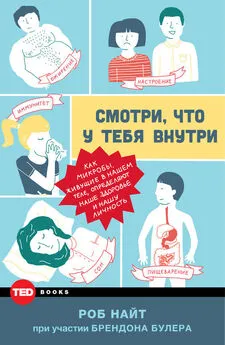


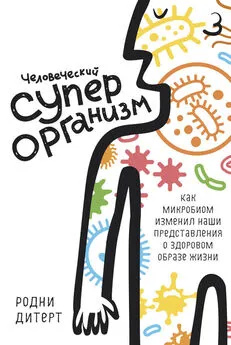
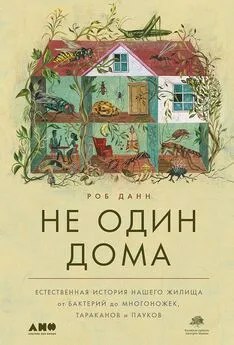
![Анна Мохова - Ты не одна [Как забыть одиночество и найти счастье внутри себя] [litres]](/books/1065776/anna-mohova-ty-ne-odna-kak-zabyt-odinochestvo-i-n.webp)

